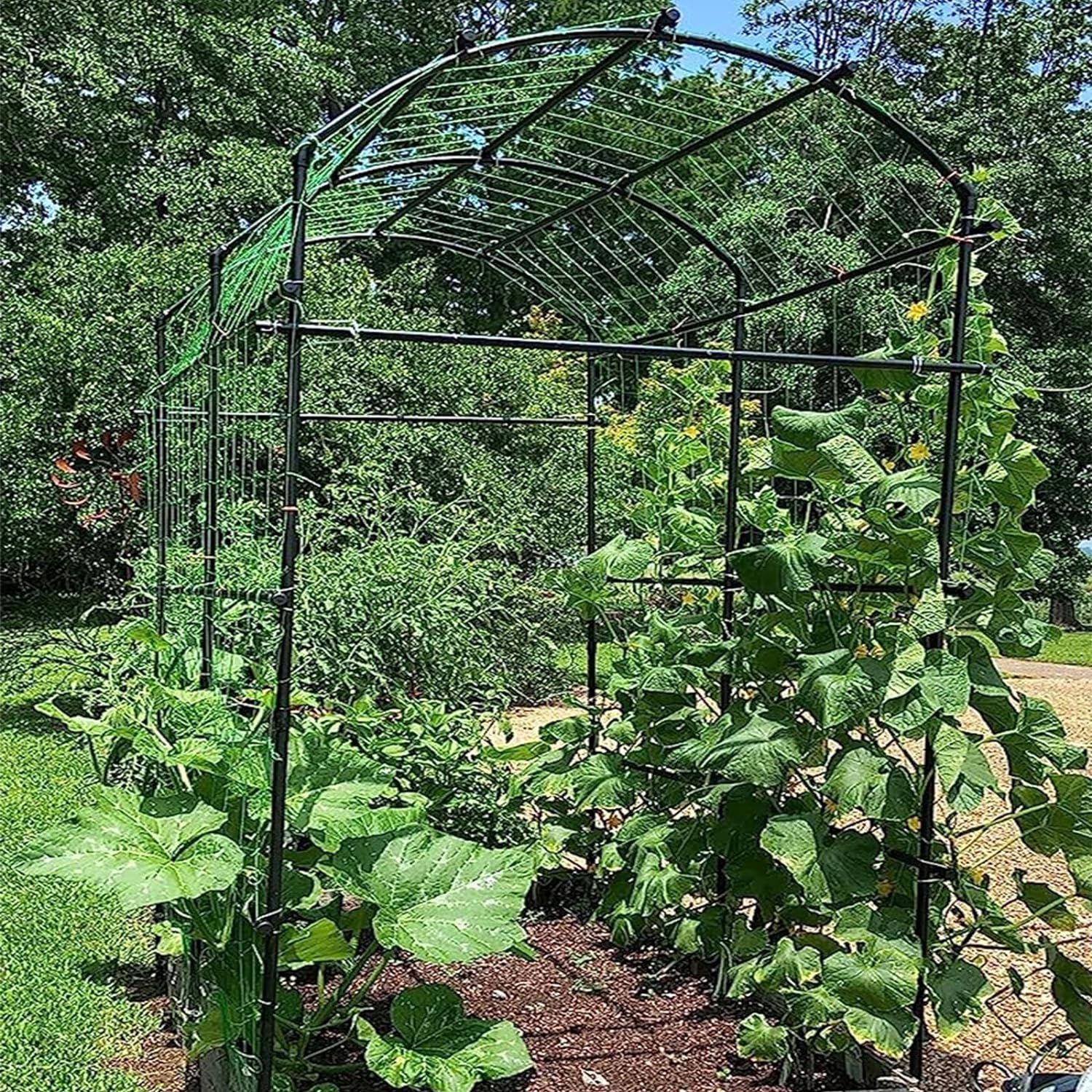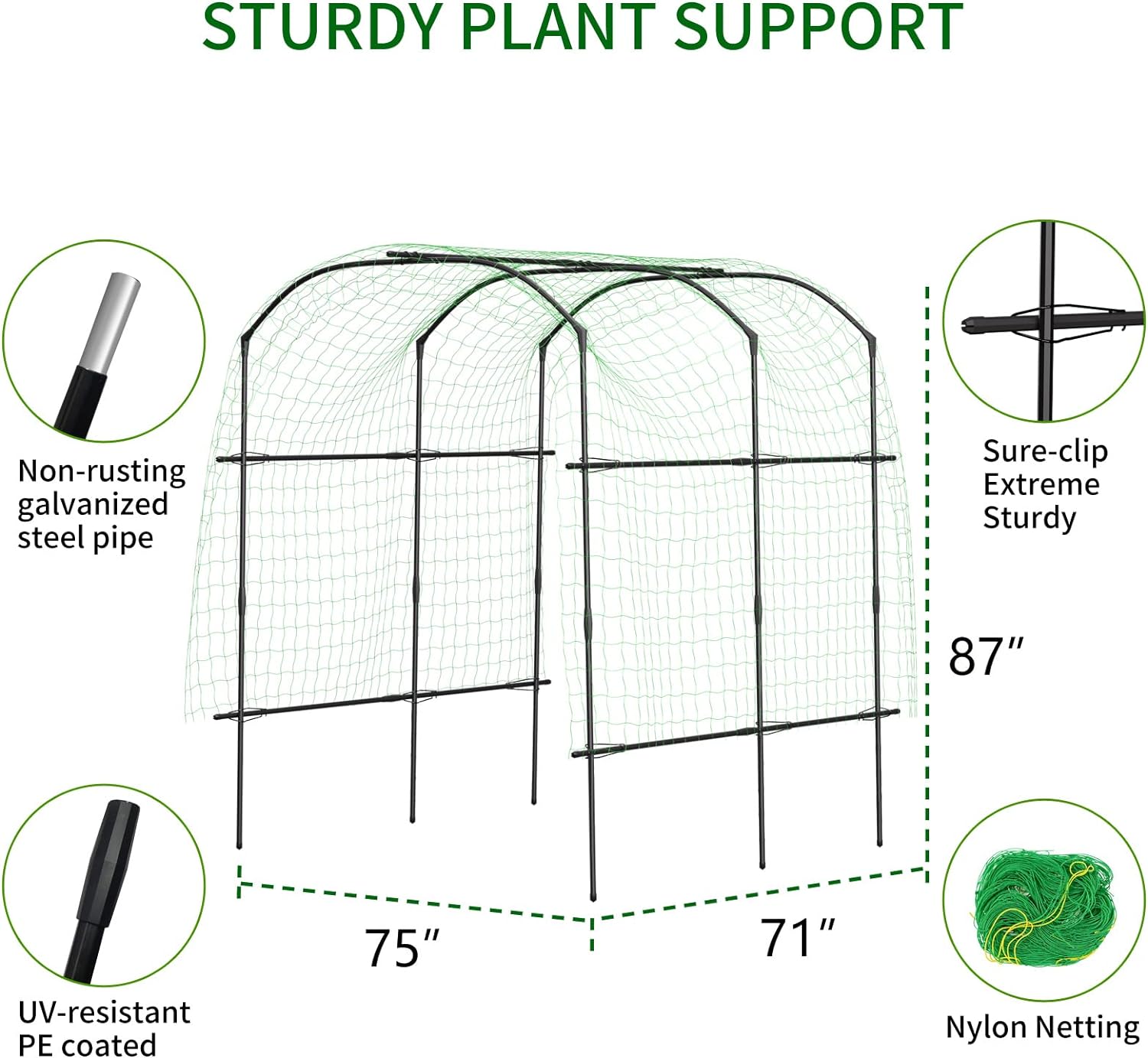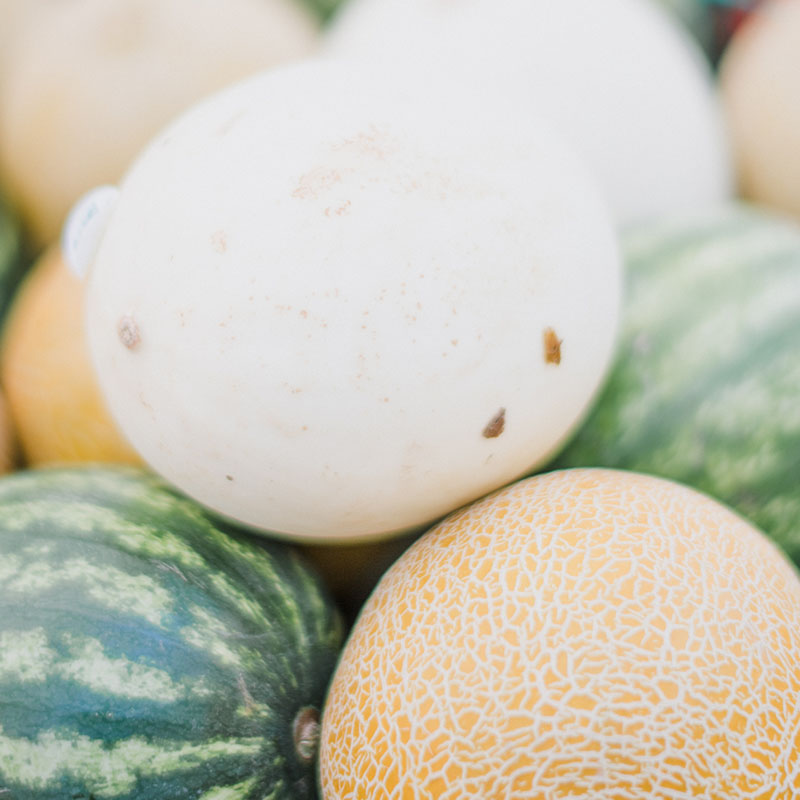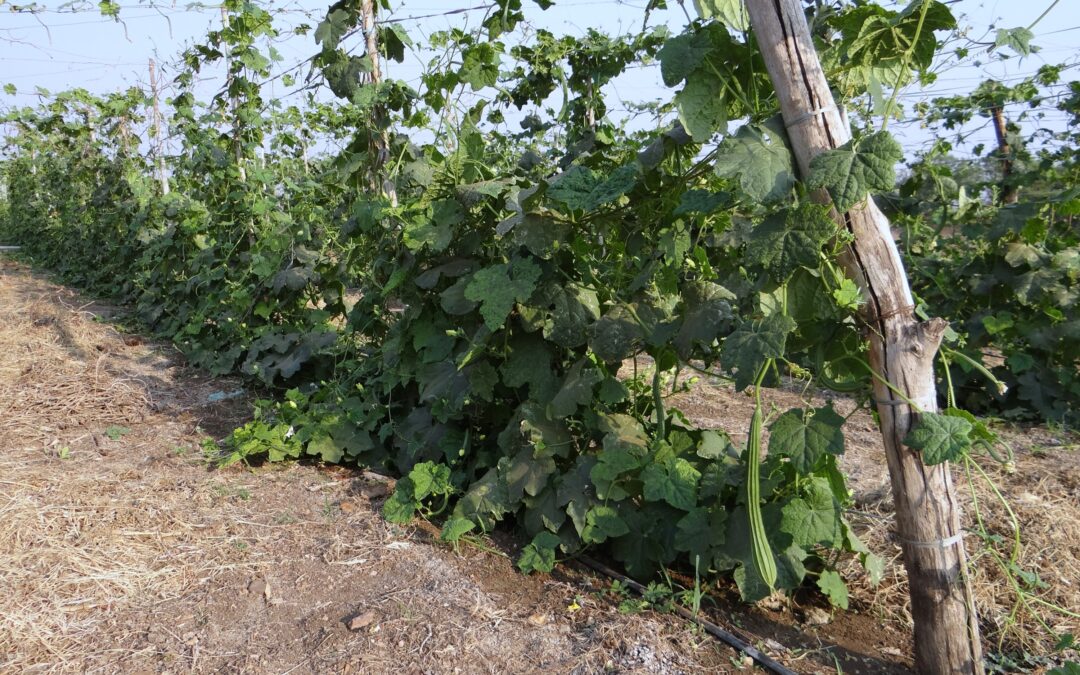Vertical Gardening takes more work than container gardening at the start, but the effect is charming. Moreover, it has back-saving benefits.
Building up allows you to become creative in displaying your plants. There are numerous ways to grow vertically and it does not necessarily have to be straight up; a little slant is okay and helps support your vegetables as they grow.
Many different types of plants can be grown upward. The most obvious are the plants that “run” or put our runners. These can be planted in containers or directly in the ground. As they grow, you train them to climb the trellis or they will climb each other. If that happens, you untangle them and redirect them to the trellis, otherwise, your production rate will be affected.
When you build your trellis, have a list of what vegetables you plan to grow on it. How large is the vegetable?
DoCred Tall Garden Arch Trellis for Climbing Plants, 87in Tall Metal Plant Support Trellis Archway for Climbing Vine Vegetable/Fruit/Flower Outdoor Yard Lawn Garden Arch Tunnel Trellis


Chicken Wire is a great support for vegetables. However, it does not do well for beans or cucumbers. The holes need to be large enough for your hand to easily pass through to pick the beans/cucumbers without needing to pick on both sides. You may still need to make a pass on the other side when you are done to make sure you did not miss any that need picking. Remember, it is all about saving your time and your back.
Side Note: Rolled wire does well for ivy and roses.

When you plant cantaloupes, watermelons, and honeydews vertically, it takes a little more planning. Reinforce the trellis with at least two crossbars for a 6-foot section and have 2 more posts with support braces on the underside. Extra netting is needed for any that cannot be moved to the front side of the trellis. Depending on how you build your trellis, “support steps” should be placed every 14 inches.
Side Note: Gently tie the plant to the wire or wood frame. Use grass strings, buy in a large roll; it will last a long time if kept out of the weather. The used string can be composted or burned; composting can take 2 years or longer.
One tool you will need to purchase if you don’t have one is a post-hole digger or auger for your drill. The head is very sharp, be cautious. Keep your feet away and your eyes directly on where you plan to dig.
Side Note: On top of your trellis, you can drop netting to keep birds from eating the strawberries, tomatoes, or vegetable.
